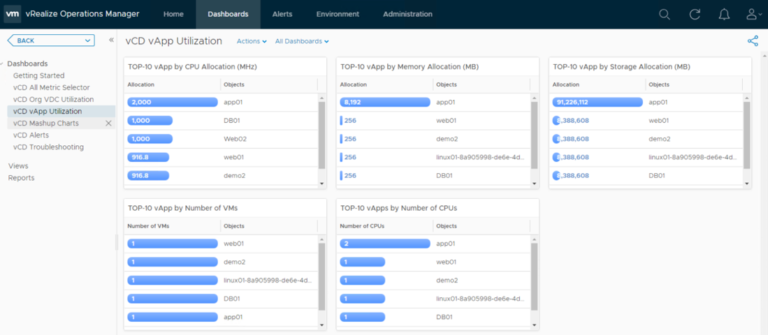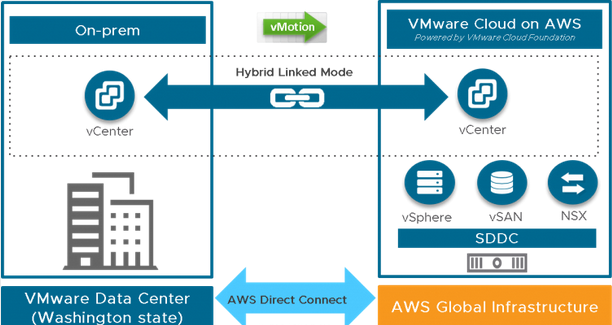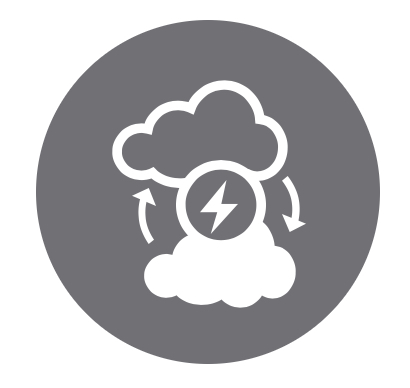
If you are new to vCloud Availability Cloud-to-Cloud DR, or would like a full update for this release, please review the homepage or view the release notes.
Embedded user interface
One of the most noteworthy features of C2C DR is a consolidated user interface. Cloud Providers and Tenants now have the ability to manage their environment, including replication, from vCloud Director. Although the replication manager can still be accessed directly, the integration with vCloud Director eliminates the need to leverage multiple interfaces. To access the availability plugin, click on the menu icon at the top of the page and select Availability
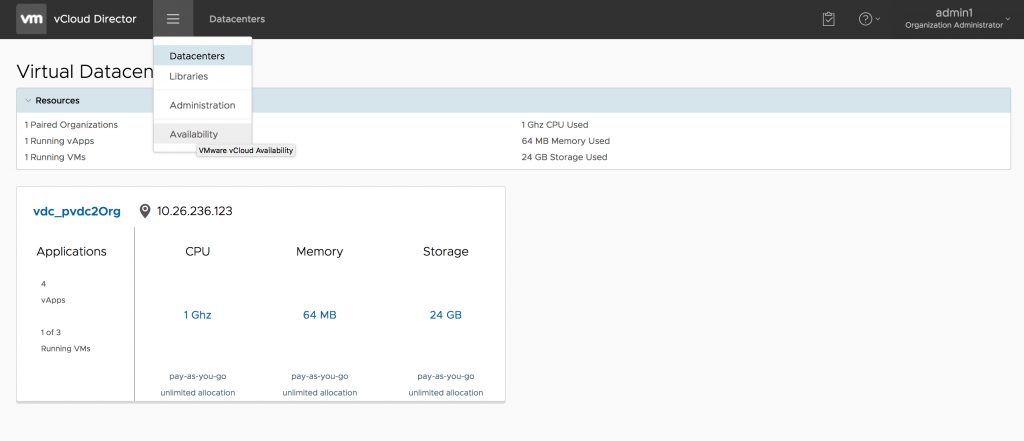
Cloud Providers and Tenants are greeted with a dashboard showing the current state of configured replications. Along with the current replication state, users will also be able to see the current state of the replication topology. Along the left side, users will see a number of options including the ability to view incoming replications, outgoing replications, and task history that are filtered by location.
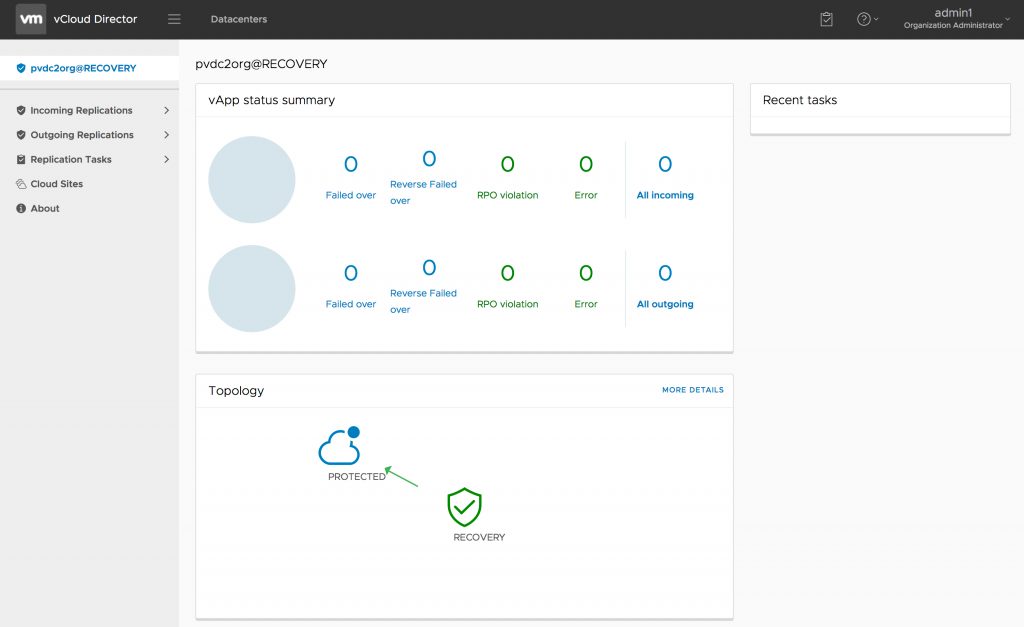
Cloud Providers have the ability to manage the replication configuration and service directly from vCloud Director as well. Under System Monitor, cloud administrators can view the state/health of the replication service and take actions such as restarting the service as well as rebooting the virtual machine. The configuration view provides the replication service details and polices allows you to configure replication polices.

Replication Policies
One of the things discussed earlier is replication policies. But what are replication policies and what do they do for me? Replication policies are policies that are assigned to organizations to manage the level of service provided to the tenant. Within a policy, the following parameters are available:
- Allow outbound replications
- Allow inbound replications
- Maximum number of allowed replications
- Maximum number of retained snapshots
- Recovery Point Objective (RPO)
What this ultimately leads to is the ability of the Cloud Provider to offered tiered services based on customer SLAs. There is one default policy that must be present, which can be edited. Additional policies can be added and assigned to tenant organizations based on need. It is important to note that only one policy is assignable to a tenant at a time.
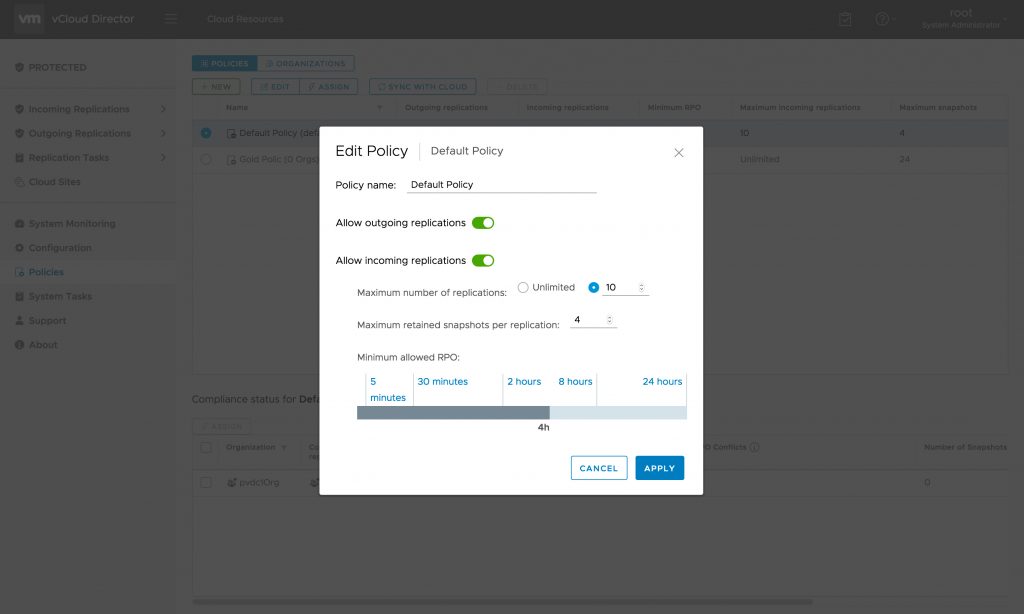
Enhanced APIs
The vCloud Availability API enables user session management, vApp replication management and monitoring, and system monitoring in vCloud Availability for Cloud-to-Cloud DR. Additional details, including the OpenAPI specification, are available at vCloud Availability API 2.0
Enhanced Scale
Performance and scale improvements:
- 300 active protections for a single tenant
- 200 active protections using a single, large, replicator
- 3000 active protections across 100 tenants
- 100 tenants with active replications
- 7 active replicator instances
- Up to 2 TB protected workloads
- 120 concurrent operations (protect, test failover, failover, and reverse operations) with a maximum of 65 concurrent failover operations
Conclusion
vCloud Availability C2C DR 1.5 offers significant enhancements and improvements over the previous version and is a worthwhile upgrade. The good news is the upgrade is an in-place upgrade from 1.0.X. For more information on how vCloud Availability for Cloud-to-Cloud DR works, download the datasheet or read the blog. You can also watch our new lightboard video on YouTube.

